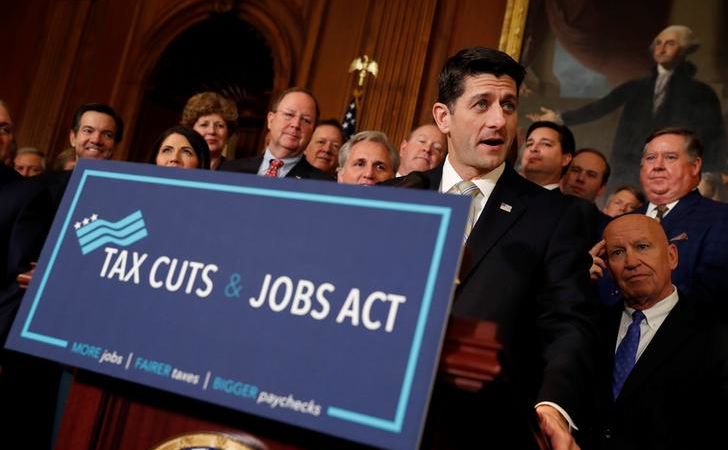Now that the Federal tax reform bill has passed and the dust has settled on the House and Senate wrangling over corporate tax rates, the minutia of pass-through profits, and the handling of various deductions, most commentators agreethat big businesses are coming out on the winning side of the deal.
Business optimism was so pronounced in the immediate aftermath of the bill passing that 125 U.S. employers have since announced plans for bonuses and pay increases for their employees as a direct result of their businesses being more profitable under the new 21% corporate tax rate. Helping to put that tax reform-spurred windfall into perspective, J.P. Morgan Chase just reported earnings that beat analyst expectations after accounting for charges related to the tax bill. The bank disclosed that it took a $2.4 billion charge in the fourth-quarter due to the Tax Cuts and Jobs Act.
Taken at face value, these swift, positive reactions to the reform bill seem to suggest a glory days scenario for businesses as we head into 2018. But it may not be that easy.
While businesses are just now wrestling with implementation of the new federal tax policy and trying to figure out the complexities surrounding international taxes, they can peer around the corner and see a wave of additional changes coming. Simmering just beneath the headline federal tax reform plan, state governments are busy at work hatching their own tax reform measures that will soon make the tax landscape even more complex to navigate for big business.
The federal tax reforms have put pressure on many states – particularly, high-tax states like New York, California, Connecticut, and New Jersey – to implement major tax reforms of their own. Many of these will be aggressive enough to send corporate tax professionals into strategic planning mode for a volatile year ahead.
Consider the situation in New York, where Governor Andrew Cuomo has introduced a tax reform plan that’s already being billed as an “end run around the Trump tax bill.” Though many of the details are still being ironed out, the root of the plan is to reduce the state’s reliance on income taxes that employees pay by starting a new, statewide payroll tax that employers would pay. It is an effort to diminish the negative tax hit many New Yorkers are expected to face from the Federal tax plan’s lower caps on mortgage interest and property tax deductions.
The Cuomo administration says the plan is designed to be revenue neutral for the state, employees, and employers. But implementing a revenue-neutral change to the tax code by shifting taxes from income to payroll isn’t that simple. Plans currently being discussed include everything from lowering workers’ salaries to decrease their income tax exposure to giving companies state tax credits to cover the cost of higher payroll taxes.
And that’s just New York. The list of Governors introducing aggressive reform plans in direct response to the new federal bill is growing by the day.
Missouri Governor Eric Greitens just promised to introduce “the boldest state tax reform in America,” in response to forecasts that the federal tax reform will cost the state upwards of $58 million in lost revenue. His plan is still short on specifics, but he has made it clear that he plans to lower taxes for businesses and individuals.
Connecticut is in the mix, too. Kevin B. Sullivan, the state tax commissioner, explained that legislators are currently looking at replacing at least part of the state income tax with an employer tax or a scheme to turn the income tax into “voluntary contributions” from residents to the state.
Voluntary tax? Hmm.
California is exploring a similar “voluntary” option, which Kevin de Leon, a member of the California state senate, described as a bill that would allow taxpayers to make charitable contributions to an established state fund in order to earn a credit. The goal would be to allow the resident to take the full amount given as a deduction.
The details of the various state plans will, of course, vary as they continue to multiply. The fact that we’re already seeing this level of local-level rhetoric on tax just weeks after the federal law was passed suggests that the remainder of 2018 will be anything but smooth sailing for businesses that need to navigate the tax laws of multiple jurisdictions. Whether the specific state plans will help or hurt businesses still isn’t clear. What we do know is that the frenetic pace of planning, forecasting, and adjusting course mid-stream will be the order of the day for corporate tax professionals for the foreseeable future.
See this article by Joe Harpaz as it originally appeared on Forbes.com.







